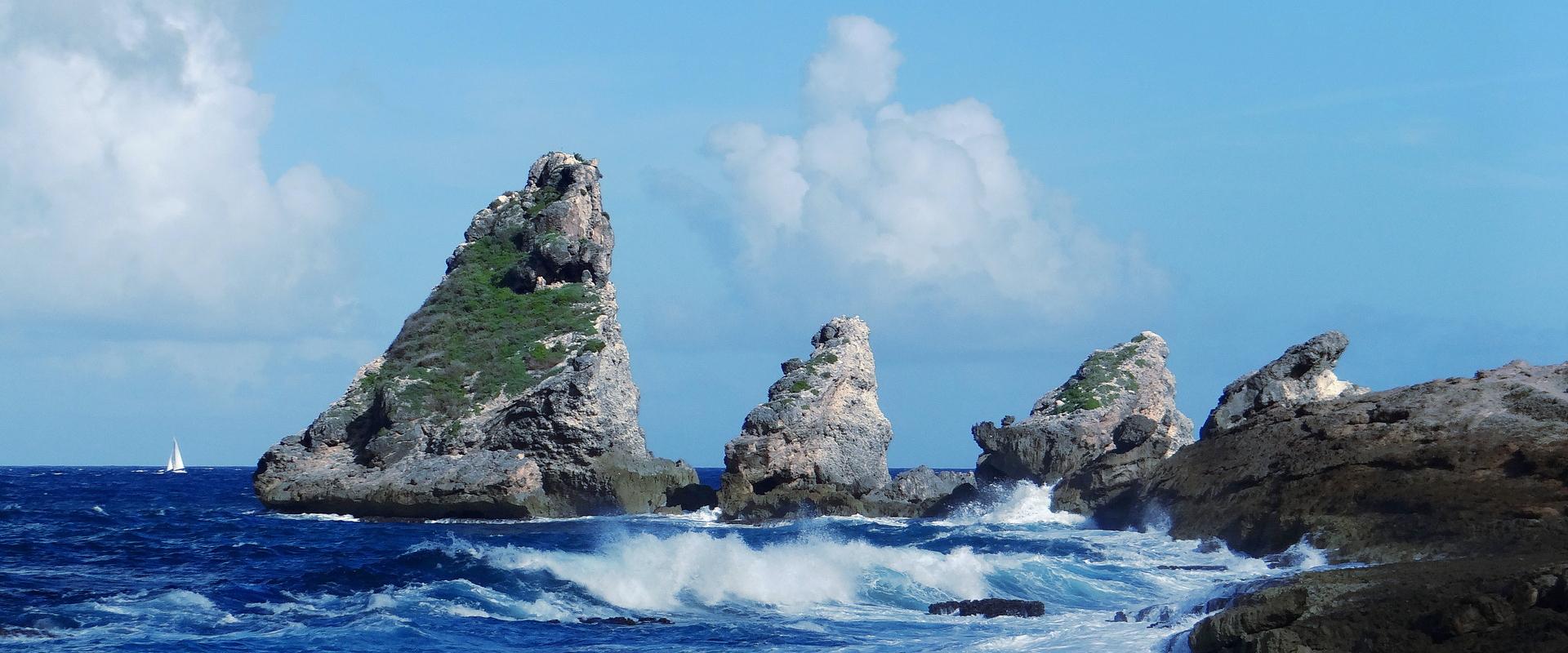Economic assessment of coastal risks in Guadeloupe
Transcription
Guadeloupe faces the risk of cyclones. This risk will increase. The island of Guadeloupe has adapted, but how vulnerable would it be now or in 30 years if nothing more is done? What will be the cost of damage and economic losses caused by coastal flooding provoked by a cyclone? A BRGM team sought to answer these questions via a public research project funded by the ADEME, the Guadeloupe Chamber of Commerce and Industry and BRGM. The goal was to offer recommendations specific to the land and economic fabric of Guadeloupe, and to help local decision makers create a relevant and effective risk-adaptation strategy. BRGM's engineers digitally replicated the 1928 cyclone. This Category 3 cyclone passed directly over the island and caused extensive damage and nearly 1,400 deaths. For the first two study sites, Jarry and Pointe-à-Pitre, we identified the homes, businesses and infrastructure exposed to coastal flooding for our scenario. Then, the cost of direct damages was tabulated. With such an event today, there would be 21 million euros of damage in Jarry and the same in Pointe-à-Pitre. And if you add the expected 30-year sea-level rise, which is 26 cm, the cost will increase by 16 percent in Jarry and 21 percent in Pointe-à-Pitre. As well as this material damage, there would also be disruptions to economic activity. In this scenario, what would be the total cost of operating losses for businesses? To create an estimate, we turned to a participative evaluation process, calling upon all local stakeholders who would be affected. A post-catastrophe scenario was created in collaboration with Guadeloupe's key institutions and system managers. Next we discussed the scenario with representatives from various sectors to estimate the potential economic consequences. According to you, what would be the scenario's impact on your business? Whatever your establishment's size, whatever your business, a bakery, a bank, a salon, a factory, perform a vulnerability self-assessment. We designed this questionnaire to empower you to quickly complete your free self-assessment. If you are the manager of a business located in Jarry or Pointe-à-Pitre, carefully consider the following post-catastrophe scenario and imagine the impact on your business. Then answer the questions to make not only a first step towards reducing your vulnerability, but also to participate in this study, which will influence future Guadeloupean policies on adapting to coastal dangers. Here is the potential scenario for the two study zones of Jarry and Pointe-à-Pitre. You can rewatch the video of the scenario while answering the questionnaire. The zones flooded during the cyclone appear in blue. The affected buildings appear in orange. The affected roads appear in pink. It will take the water just under 48 hours to recede. Until the end of the second day, driving on the flooded roads will be nearly impossible due to the water levels and debris. The priority will be securing people and their belongings. There will be widespread power outages. Essential services will rely on their generators. The internet and phone networks, whether landline or mobile, will be down. Food and drinking water will be disrupted for 1 to 2 days. During the first two days, the island will be paralysed. From day 2 to day 4, most roads will be cleared, but some will require substantial repairs, disrupting traffic flows. Crossing the Gabarre bridge will be very difficult, and reaching Jarry will be especially complicated. Electricity will be back, but not in the blue zones. In those zones, phone service will not be available. Elsewhere the mobile network will be compromised. Mobile services will not function, only voice calls will. The phone network and wired internet will be seriously impacted. This tends to complicate cash withdrawals and card payments. From day 4 to day 7, southbound traffic to Jarry will be disrupted as will bridge crossings. In the blue zones, power will return very slowly. During the second week, north-eastern traffic to Jarry will be the last disrupted zone. Power will largely be restored. As for mobile phones, coverage will be extended progressively, as will signal strength. Mobile internet will finally return. By the end of the second week, traffic will no longer be disrupted, and few buildings without electricity will remain. Telephone and wired internet will return to Jarry three months later and to Pointe-à-Pitre six months later. The mobile network will therefore be congested. In this scenario, whether or not your business is directly impacted by flooding, what would be the consequences for your establishment? Answer the vulnerability self-assessment questionnaire. You will thus be participating in a one-of-a-kind study and in the creation of risk adaptation policies that will be appropriate for your area and your economic fabric.







